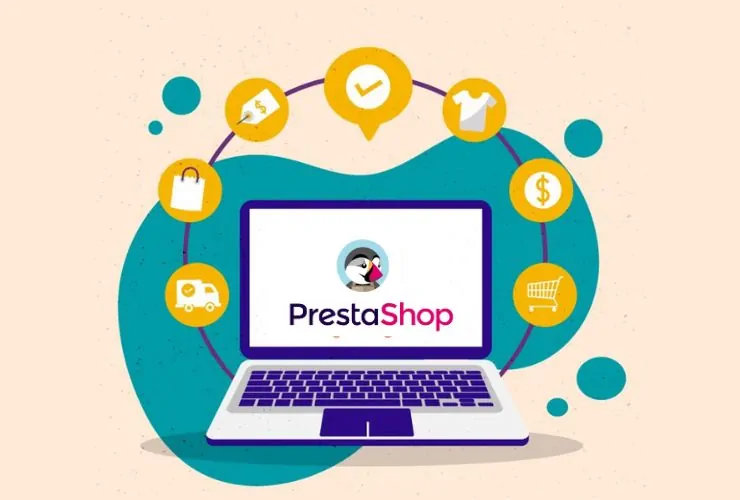In the hectic world of eCommerce online, your website’s appearance and feel is not just about looks—it’s part of your brand strategy. It can influence how customers perceive your company, how at ease they are navigating your store, and whether they become real paying customers. With PrestaShop, a sophisticated and flexible eCommerce platform, choosing the ideal theme is a crucial decision that can make all the difference to your online success.
If you’re launching a new shop or revamping an existing one, here’s the ultimate guide to help you choose the best PrestaShop theme for your business.
1. Know Your Brand Identity
Before you venture into theme choice, define firmly what your brand stands for. Are you an upscale fashion boutique? A green, eco-friendly skin care company? A tech-savvy gadget shop? Your theme must reflect these values visually.
Think about how things like color palettes, fonts, image types, and layout factor into your brand image overall. A simple theme might work for upscale brands, while bright, colorful formats might appeal to creative or younger niches.
2. Prioritize Responsive Design
More than 60% of online consumers browse and buy on phones. If your theme is not optimized for tablets and mobile devices, you could be forgoing profits. With a responsive design, your site will look and perform beautifully on every screen size and device.
A truly mobile-first PrestaShop theme will adjust content smoothly, offer touch-screen interfaces, and page-load fast without sacrificing design quality.
3. Focus on User Experience (UX)
The best themes blend looks and functionality. You must have navigation that is easy and intuitive to use for visitors. Look for layouts that feature clean menus, product filtering, short calls-to-action (CTAs), and simple checkout processes.
Cluttered interfaces or poorly crafted pages will frustrate visitors and increase bounce rates. Great UX will encourage longer visit times and enhance your conversion opportunities.
4. Inspect Theme Customizability
No two brands are identical—your theme should be versatile enough to make your shop stand out. A flexible theme allows you to modify design features such as colors, fonts, header and footer styles, footer columns, and layout settings from the backend of your admin panel.
Themes with support for PrestaShop’s Live Theme Editor or with incorporated theme builders can facilitate such modifications for those who are not developers.
5. Test Performance and Speed
Page load time is not just important for SEO but also directly impacts user experience. Consumers anticipate that websites load within two seconds or less. Select a theme that’s lean, with clean code, and performance-optimized.
Try demo versions of themes using tools such as GTmetrix or Google PageSpeed Insights before buying. Steer clear of bloated themes with useless animations or scripts.
6. Search for SEO Optimization
Your theme should facilitate—not inhibit—your search engine visibility. Choose a PrestaShop theme that supports proper HTML5 markup, structured data, high-speed code, and SEO module compatibility.
Integrated SEO functionalities such as meta tag customizability, alt image attributes, breadcrumb links, and URL cleanliness can greatly enhance your store’s search engine rankings.
7. Browser Compatibility
Your website visitors can be visiting your website on all kinds of browsers—Chrome and Firefox to Safari and Edge. A good theme should be rigorously tested for compatibility across all major browsers in order to ensure consistent look and feel.
Browser-inconsistent rendering can damage credibility and trust, especially on transactional pages like checkout or payment.
8. Support and Regular Updates
The PrestaShop core software is updated periodically for security and feature fixes. Your theme must be updated periodically by its developer or agency to stay compatible and secure.
Choose themes that have good customer support, comprehensive documentation, and regular updates. This is especially important if you are using paid themes or have a high-end store.
9. Read Reviews and Ratings
Prior to investing in a theme, find out what other people have to say. Ratings and reviews offer good insights into the actual real-world performance of the theme, such as ease of use, developer support, bugs, and flexibility in customizing.
You can also refer to forums or social communities where store owners post their experiences about certain themes.
10. Demo the Theme First
Most good theme developers offer a live demo of their themes. Don’t miss this step. Navigate through the demo site as a customer—look at the product pages, filters, shopping cart, and mobile responsiveness.
Notice page transitions, checkout flows, and general visual appeal. This will provide you with a realistic expectation of how the theme functions.
Bonus Tip: Think about Niche-Specific Themes
Other PrestaShop templates are created directly for specific business types—be it electronics, fashion, furniture, or foods. These contain features that integrate especially for the niche, as for example with enhanced filtering, product labels, or catalog display. Beginning work from a niche template can mean less time wastage and also less cost.
Final Thoughts
Selecting the proper PrestaShop theme isn’t so much about finding what looks appealing—it’s about finding a starting point for online success. From supporting your brand to improving UX, SEO, and performance, your theme plays a critical role in the customer experience.
Invest the time to consider your business needs, customer requirements, and feature demands before deciding on a theme. Using the correct decision, your PrestaShop store will not only be spectacular but also convert and grow effectively.
Having trouble with the ideal PrestaShop theme or in need of customizing one to fit your brand? Contact our support team—we’re ready to assist you in developing an outstanding store that works perfectly.














